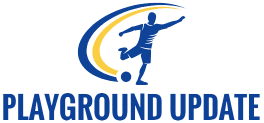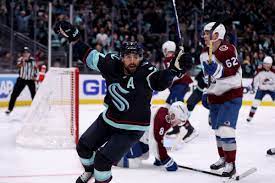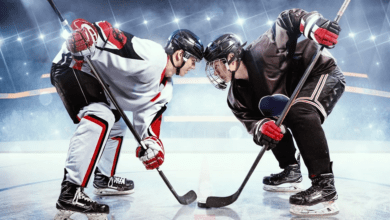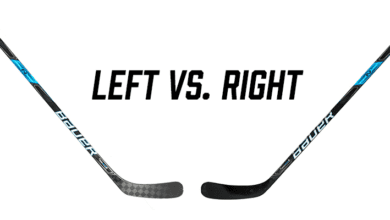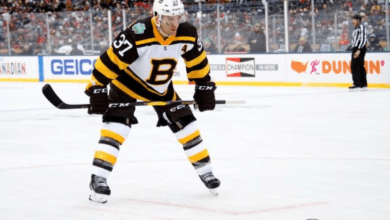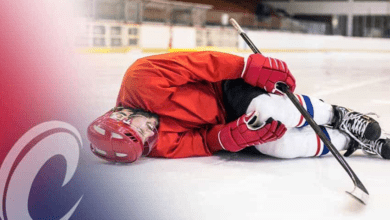How to Create an Effective Hockey Training Program

How to Create an Effective Hockey Training Program, Creating an effective hockey training program is crucial for athletes looking to enhance their skills, improve performance, and reach their full potential on the ice. A well-designed program takes into account the specific demands of hockey, such as speed, agility, endurance, and strength. In this article, we will explore the key steps to create a comprehensive and effective hockey training program that will benefit players at all levels.
Create an Effective Hockey Training
Step 1: Assess Individual Needs
Assessing individual needs in the context of a hockey training program involves evaluating the strengths and weaknesses of each player. It is a systematic process that helps identify areas that require improvement and guides the development of a tailored training program. Here’s a breakdown of how to assess individual needs:
- Skill Evaluation: Evaluate the player’s technical skills such as skating technique, stickhandling, shooting accuracy, passing ability, and game awareness. This can be done through observation, skill-specific drills, or video analysis.
- Physical Assessment: Assess the player’s physical attributes, including speed, agility, endurance, strength, and flexibility. This can involve tests and measurements such as sprint times, agility drills, vertical jump, muscular strength assessments, and flexibility tests.
- Game Performance Analysis: Analyze the player’s performance during game situations. Look for areas where they excel and areas where they may struggle, such as decision-making under pressure, defensive positioning, or offensive creativity.
- Feedback and Communication: Engage in open communication with the player to understand their self-perception and goals. Seek feedback from coaches, teammates, and trainers who have observed the player in various game and practice situations. This holistic approach helps gather comprehensive information about the player’s needs.
By conducting these assessments, trainers and coaches gain a deeper understanding of each player’s abilities, limitations, and areas for improvement. This information serves as a foundation for developing a personalized training program that addresses specific weaknesses and maximizes the player’s potential for growth and development.
Step 2: Establish Clear Goals
Establishing clear goals in a hockey training program refers to defining specific objectives that players aim to achieve through their training. These goals serve as a roadmap and provide direction for the training program, ensuring that the efforts are focused and purposeful. Clear goals help athletes stay motivated, track progress, and make adjustments as needed.
When establishing clear goals, it’s important to make them specific, measurable, attainable, relevant, and time-bound (SMART goals). Let’s break down each aspect:
- Specific: Clearly define what the desired outcome is. For example, improving shooting accuracy, increasing skating speed, or enhancing stickhandling skills.
- Measurable: Set criteria to measure progress towards the goal. This could involve tracking the number of goals scored, measuring skating times, or evaluating performance in specific drills.
- Attainable: Ensure that the goals are realistic and achievable based on the player’s current skill level and resources available. It’s important to set challenging goals but ones that are within reach.
- Relevant: Align the goals with the player’s overall development and the requirements of the sport. Consider the specific position they play or the areas where improvement is most needed.
- Time-bound: Set a deadline or timeframe for achieving the goals. This helps create a sense of urgency and allows for monitoring progress over time.
By establishing clear goals, players have a clear sense of purpose and direction in their training. They know what they are striving for and can focus their efforts on specific areas that require improvement. Clear goals also allow for regular assessment and evaluation to track progress and make necessary adjustments to the training program.
It’s worth noting that goals may vary among players, depending on their position, skill level, and individual aspirations. Tailoring the goals to each player’s needs and abilities ensures that they are challenged appropriately and motivated to push themselves towards improvement.
Ultimately, clear goals provide players with a target to work towards, keeping them motivated, focused, and engaged throughout their hockey training program.
Step 3: Design a Periodized Training Plan
Develop a periodized training plan that encompasses different phases throughout the year. This includes off-season, pre-season, in-season, and post-season phases. Each phase should have specific objectives and training emphasis. For example, the off-season may focus on building strength and conditioning, while the in-season phase may concentrate on maintaining performance and preventing injuries.
Step 4: Incorporate On-Ice and Off-Ice Training
An effective hockey training program should include a combination of on-ice and off-ice training. On-ice training focuses on skill development, tactical awareness, and game-specific scenarios. Off-ice training includes strength and conditioning exercises, agility drills, speed training, and flexibility work. Balancing both types of training ensures comprehensive development and prepares players for the physical demands of the game.
Step 5: Include Strength and Conditioning Exercises
Strength and conditioning exercises are a crucial component of a comprehensive hockey training program. These exercises focus on improving overall physical performance, enhancing power, speed, and muscular strength. Here are some key elements and examples of strength and conditioning exercises for hockey players:
- Resistance Training: Incorporate exercises that involve external resistance, such as free weights, resistance bands, or weight machines. Examples include squats, deadlifts, lunges, bench presses, and shoulder presses. These exercises target major muscle groups and help develop strength, power, and muscular endurance.
- Plyometrics: Plyometric exercises involve explosive movements that utilize the stretch-shortening cycle of muscles. Examples include box jumps, depth jumps, lateral jumps, and medicine ball throws. Plyometrics improve power, agility, and explosive strength, which are crucial for quick accelerations, changes of direction, and powerful shots in hockey.
- Core Strengthening: A strong core is essential for stability, balance, and generating power in hockey movements. Include exercises such as planks, Russian twists, medicine ball slams, and cable woodchoppers. These exercises target the abdominal muscles, lower back, and obliques, enhancing core strength and stability.
- Agility Drills: Agility drills improve quickness, coordination, and change of direction ability. Include ladder drills, cone drills, and shuttle runs to simulate the fast-paced movements required in hockey. These drills help players navigate through opponents, create separation, and maintain balance while executing precise maneuvers.
- Interval Training: Hockey involves bursts of high-intensity activity followed by brief rest periods. Incorporate interval training to simulate game-like conditions. For example, perform high-intensity exercises like sprints, bike sprints, or shuttle runs for a set time or distance, followed by active recovery periods. This type of training improves cardiovascular endurance and the ability to recover quickly during games.
- Flexibility and Mobility: Include exercises to improve flexibility and mobility, such as dynamic stretching and mobility drills. These exercises help increase the range of motion, prevent injuries, and facilitate proper movement patterns on the ice.
It’s important to note that strength and conditioning exercises should be tailored to the individual needs and capabilities of each player. Beginners should start with lighter weights and simpler exercises, gradually increasing the intensity and complexity as they progress. It’s advisable to work with a qualified strength and conditioning coach or seek professional guidance to ensure proper form, technique, and safety.

Incorporating a variety of strength and conditioning exercises into the training program will help hockey players develop the physical attributes necessary to excel in the sport, including strength, power, endurance, agility, and flexibility.
More Posts
How to Place Successful Football Bets
How to Draft a Winning Fantasy Football Team
How to Stay Updated with IPL News and Player Performances
How to Improve Your Football Skills
Step 6: Focus on Skating Technique
Skating is a fundamental aspect of hockey, and dedicating time to improve skating technique is crucial. Incorporate drills that focus on stride efficiency, agility, and edge control. Work on areas such as acceleration, deceleration, crossovers, and pivoting. Skating drills should be integrated into both on-ice and off-ice training sessions.
Step 7: Include Sport-Specific Drills and Game Situations
To simulate real game scenarios, include sport-specific drills and game situations in the training program. This helps players develop their decision-making abilities, spatial awareness, and hockey sense. Incorporate small-sided games, situational drills, and scrimmage sessions that replicate game conditions.
Conclusion
Creating an effective hockey training program involves assessing individual needs, setting clear goals, designing a periodized plan, incorporating both on-ice and off-ice training, focusing on strength and conditioning, improving skating technique, and including sport-specific drills. A well-rounded program that addresses the specific demands of hockey will enable players to enhance their skills, improve performance, and excel on the ice.
FAQs
Q1: How often should players train in a hockey training program?
The frequency of training sessions will depend on several factors, including the level of the players and their schedule. However, a general guideline is to aim for a minimum of three to five training sessions per week, combining on-ice and off-ice workouts. It’s important to allow for sufficient rest and recovery between sessions to avoid overtraining and injuries.
Q2: How long should a typical training session be?
The duration of a training session can vary, but a typical session should last around 60 to 90 minutes. This timeframe allows for an adequate warm-up, skill development drills, strength and conditioning exercises, and cool-down/stretching.
Q3: Should players focus on specific skills or have a well-rounded approach?
While it’s essential to address individual weaknesses and specific skills that need improvement, a well-rounded approach is also important. Hockey is a multi-faceted sport, and players should have a solid foundation in various areas, including skating, shooting, passing, and game strategy. Balancing skill development with overall physical conditioning ensures comprehensive player development.
Q4: When should off-ice training be incorporated into the program?
Off-ice training can be integrated throughout the year, depending on the phase of the training program. During the off-season and pre-season, off-ice training can have a more significant emphasis to build strength, power, and endurance. In-season, the focus shifts to maintaining fitness levels and injury prevention, while post-season may involve active recovery and rehabilitation exercises.
Creating an effective hockey training program requires careful planning, individual assessment, clear goals, and a comprehensive approach that addresses the specific demands of the sport. By following these steps and incorporating both on-ice and off-ice training, players can enhance their skills, improve physical performance, and excel in the game of hockey.
